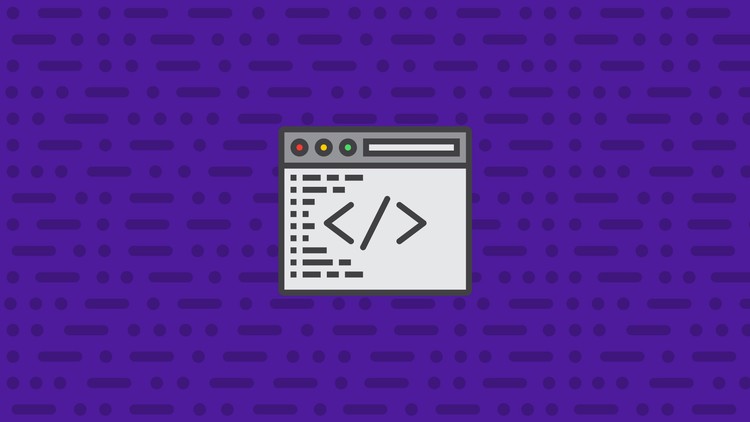R Programming For Absolute Beginners
- Description
- Curriculum
- FAQ
- Reviews
If you have decided to learn R as your data science programming language, you have made an excellent decision!
R is the most widely used tool for statistical programming. It is powerful, versatile and easy to use. It is the first choice for thousands of data analysts working in both companies and academia. This course will help you master the basics of R in a short time, as a first step to become a skilled R data scientist.
The course is meant for absolute beginners, so you don’t have to know anything about R before starting. (You don’t even have to have the R program on your computer; I will show you how to install it.) But after graduating this course you will have the most important R programming skills – and you will be able to further develop these skills, by practicing, starting from what you will have learned in the course.
This course contains about 100 video lectures in nine sections.
In the first section of this course you will get started with R: you will install the program (in case you didn’t do it already), you will familiarize with the working interface in R Studio and you will learn some basic technical stuff like installing and activating packages or setting the working directory. Moreover, you will learn how to perform simple operations in R and how to work with variables.
The next five sections will be dedicated to the five types of data structures in R: vectors, matrices, lists, factors and data frames. So you’ll learn how to manipulate data structures: how to index them, how to edit data, how to filter data according to various criteria, how to create and modify objects (or variables), how to apply functions to data and much more. These are very important topics, because R is a software for statistical computing and most of the R programming is about manipulating data. So before getting to more advanced statistical analyses in R you must know the basic techniques of data handling.
After finishing with the data structures we’ll get to the programming structures in R. In this section you’ll learn about loops, conditional statements and functions. You’ll learn how to combine loops and conditional statements to perform complex tasks, and how to create custom functions that you can save and reuse later. We will also study some practical examples of functions.
The next section is about working with strings. Here we will cover the most useful functions that allow us to manipulate strings. So you will learn how to format strings for printing, how to concatenate strings, how to extract substrings from a given string and especially how to create regular expressions that identify patterns in strings.
In the following section you’ll learn how to build charts in R. We are going to cover seven types of charts: dot chart (scatterplot), line chart, bar chart, pie chart, histogram, density line and boxplot. Moreover, you will learn how to plot a function of one variable and how to export the charts you create.
Every command and function is visually explained: you can see the output live. At the end of each section you will find a PDF file with practical exercises that allow you to apply and strengthen your knowledge.
So if you want to learn R from scratch, you need this course. Enroll right now and begin a fantastic R programming journey!
-
2Installing R and RStudioVideo lesson
How to download and install R and RStudio.
-
3The RStudio InterfaceVideo lesson
The RStudio work interface, explained in detail.
-
4Installing and Activating R PackagesVideo lesson
How to work with packages in R - you will need that.
-
5Setting the Working DirectoryVideo lesson
How to setup the working directory in R, so you can access the files in that directory.
-
6Basic Operations in RVideo lesson
How to perform the basic mathematical operations in R.
-
7Working With VariablesVideo lesson
The basic stuff about variables in R.
-
8Creating Vectors With the c() FunctionVideo lesson
How to use the c() function - one of the most common ways to create vectors.
-
9Creating Vectors Using the Colon OperatorVideo lesson
Build sequences of integers with the colon operator.
-
10Creating Vectors With the rep() FunctionVideo lesson
Create vectors of replicated values with the rep() function.
-
11Creating Vectors With the seq() FunctionVideo lesson
Create sequences of real numbers with the seq() function.
-
12Creating Vectors of Random NumbersVideo lesson
Build vectors of discrete and continuous random numbers.
-
13Creating Empty VectorsVideo lesson
Create vectors with no elements.
-
14Indexing Vectors With Numeric IndicesVideo lesson
How to access vector components using numeric indices.
-
15Indexing Vectors With Logical IndicesVideo lesson
How to access vector components using logical indices.
-
16Naming Vector ComponentsVideo lesson
How to name vector components - and remove names when you don't need them.
-
17Filtering VectorsVideo lesson
How to access the vector components using various criteria.
-
18The Functions all() and any()Video lesson
Use these two function to check whether the vector components meet your conditions.
-
19Sum and Product of Vector ComponentsVideo lesson
Besides sum and product, you will learn how to compute basic statistical indicators for a numeric vector.
-
20Vectorized OperationsVideo lesson
One of the most important topics in R: how to apply mathematical operations to all the components in a vector.
-
21Treating Missing Values in VectorsVideo lesson
How to deal with unknown values in a vector.
-
22Sorting VectorsVideo lesson
How to order vector components.
-
23Minimum and Maximum ValuesVideo lesson
How to get the minimum and maximum values in vectors and pairs of vectors.
-
24The ifelse() FunctionVideo lesson
A great way to use the if-then-else statement on a vector.
-
25Adding and Multiplying VectorsVideo lesson
Useful operations with vectors - and something about recycling vectors.
-
26Testing Vector EqualityVideo lesson
How to check whether two vectors have equal components or not.
-
27Vector CorrelationVideo lesson
Compute the Pearson correlation for two numeric vectors.
-
28Bonus Lecture: Learn Statistics with RText lesson
How to perform statistical analyses in R like an expert.
-
29Practical ExercisesText lesson
Practical exercises for the section "Vectors".
-
30Creating Matrices With the matrix() FunctionVideo lesson
The most used way to create matrices - the matrix() function.
-
31Creating Matrices With the rbind() and cbind() FunctionsVideo lesson
Other two useful functions for creating matrices.
-
32Naming Matrix Rows and ColumnsVideo lesson
How to name rows and columns in a matrix.
-
33Indexing MatricesVideo lesson
How to access matrix elements.
-
34Filtering MatricesVideo lesson
How to find the elements that meet one or several conditions.
-
35Editing Values in MatricesVideo lesson
How to change any data value in a matrix.
-
36Adding and Deleting Rows and ColumnsVideo lesson
How to add new rows or columns, and how to remove rows and columns.
-
37Minima and Maxima in MatricesVideo lesson
Find the minimum and maximum values in a matrix.
-
38Applying Functions to Matrices (1)Video lesson
Using the apply() function to perform mathematical operations on the matrix rows and columns.
-
39Applying Functions to Matrices (2)Video lesson
Some more important stuff about the apply() function.
-
40Applying Functions to Matrices (3)Video lesson
Apply the swipe() function to matrices.
-
41Adding and Multiplying MatricesVideo lesson
How to add and multiply two matrices (when these operations are possible).
-
42Other Matrix OperationsVideo lesson
How to compute the determinant and the inverse of a quadratic matrix - and a couple more operations.
-
43Creating Multidimensional ArraysVideo lesson
How to build an array with two (or more) matrices.
-
44Indexing Multidimensional ArraysVideo lesson
How to access any element (or group of elements) in an array.
-
45Practical ExercisesText lesson
Practical exercises for the section "Matrices and Arrays".
-
46Create Lists With the list() FunctionVideo lesson
What is a list and how to use the list() function to create one.
-
47Create Lists With the vector() FunctionVideo lesson
Other way to create a list - the vector() function.
-
48Indexing Lists With BracketsVideo lesson
How to access list elements.
-
49Indexing Lists Using Objects NamesVideo lesson
Other possible way to access list elements.
-
50Editing Values in ListsVideo lesson
How to modify values (or entire objects) in a list.
-
51Adding and Removing List ObjectsVideo lesson
How to add objects to a list, or remove existing objects.
-
52Applying Functions to ListsVideo lesson
When and how you can use the lapply() function on a list.
-
53Practical Example of List: the Regression Analysis OutputVideo lesson
Use what you know about lists to "read" the results of a linear regression analysis.
-
54Bonus Lecture: Data Analysis in RText lesson
Learn to perform simple and advanced data analyses in R.
-
55Practical ExercisesText lesson
Practical exercises for the section "Lists".
-
56Working With FactorsVideo lesson
How to create unordered and ordered factors.
-
57Splitting a Vector By a Factor LevelsVideo lesson
How to split a vector in several objects using the levels of a factor.
-
58The tapply() FunctionVideo lesson
How to compute summary values for a vector components by a factor level with the tapply() function.
-
59The by() FunctionVideo lesson
How to compute summary values for a vector components by a factor level, this time using the by() function.
-
60Practical ExercisesText lesson
Practical exercises for the section "Factors".
-
61Creating Data FramesVideo lesson
How to create data frames using the data.frame() function.
-
62Loading Data Frames From External FilesVideo lesson
How to read data frames from the files on your hard disk (CSV or text format).
-
63Writing Data Frames in External FilesVideo lesson
How to save a data frame on your hard disk as a CSV file.
. -
64Indexing Data Frames As ListsVideo lesson
The first way to index a data frame.
-
65Indexing Data Frames As MatricesVideo lesson
The second way to index a data frame.
-
66Selecting a Random Sample of EntriesVideo lesson
How to draw a random sample of observation form any data frame.
-
67Filtering Data FramesVideo lesson
Find the rows in a data frame that meet certain criteria.
-
68Editing Values in Data FramesVideo lesson
Modify values in data frames.
-
69Adding Rows and Columns to Data FramesVideo lesson
Adding new observations and variables to an existing data frame.
-
70Naming Rows and Columns in Data FramesVideo lesson
Naming (and renaming) observations and variables in a data frame.
-
71Applying Functions to Data FramesVideo lesson
Using the functions apply(), lapply() and sapply() with data frames.
-
72Sorting Data FramesVideo lesson
Arrange the data frame entries in any order you want.
-
73Shuffling Data FramesVideo lesson
Arrange the data frame entries in a random order.
-
74Merging Data FramesVideo lesson
Join two data frames based on a common variable.
-
75Practical ExercisesText lesson
Practical exercises for the section "Data Frames".
-
76For LoopsVideo lesson
Use the for loops to go through a sequence and perform various operations.
-
77While LoopsVideo lesson
Learn how to work with a while loop.
-
78Repeat LoopsVideo lesson
Learn how to use a repeat loop.
-
79Nested For LoopsVideo lesson
Get more serious - build a few nested for loops.
-
80
-
81Nested Conditional StatementsVideo lesson
More complex if-else statements.
-
82Loops and Conditional StatementsVideo lesson
Combining for loops and conditional statements to perform really useful tasks.
-
83User Defined FunctionsVideo lesson
Create custom functions that you can reuse later.
-
84The Return CommandVideo lesson
Why is the return command useful often times.
-
85More Complex Functions ExamplesVideo lesson
Using nested loops and conditional statements in a function.
-
86Checking Whether an Integer Is a Perfect SquareVideo lesson
A function that checks whether a positive whole number is a perfect square or not.
-
87A Custom Function That Solves Quadratic EquationsVideo lesson
A function that solves any quadratic equation.
-
88Binary OperationsVideo lesson
How to create custom binary operations using functions.
-
89Practical ExercisesText lesson
Practical exercises for the section "Programming Structures".

External Links May Contain Affiliate Links read more





